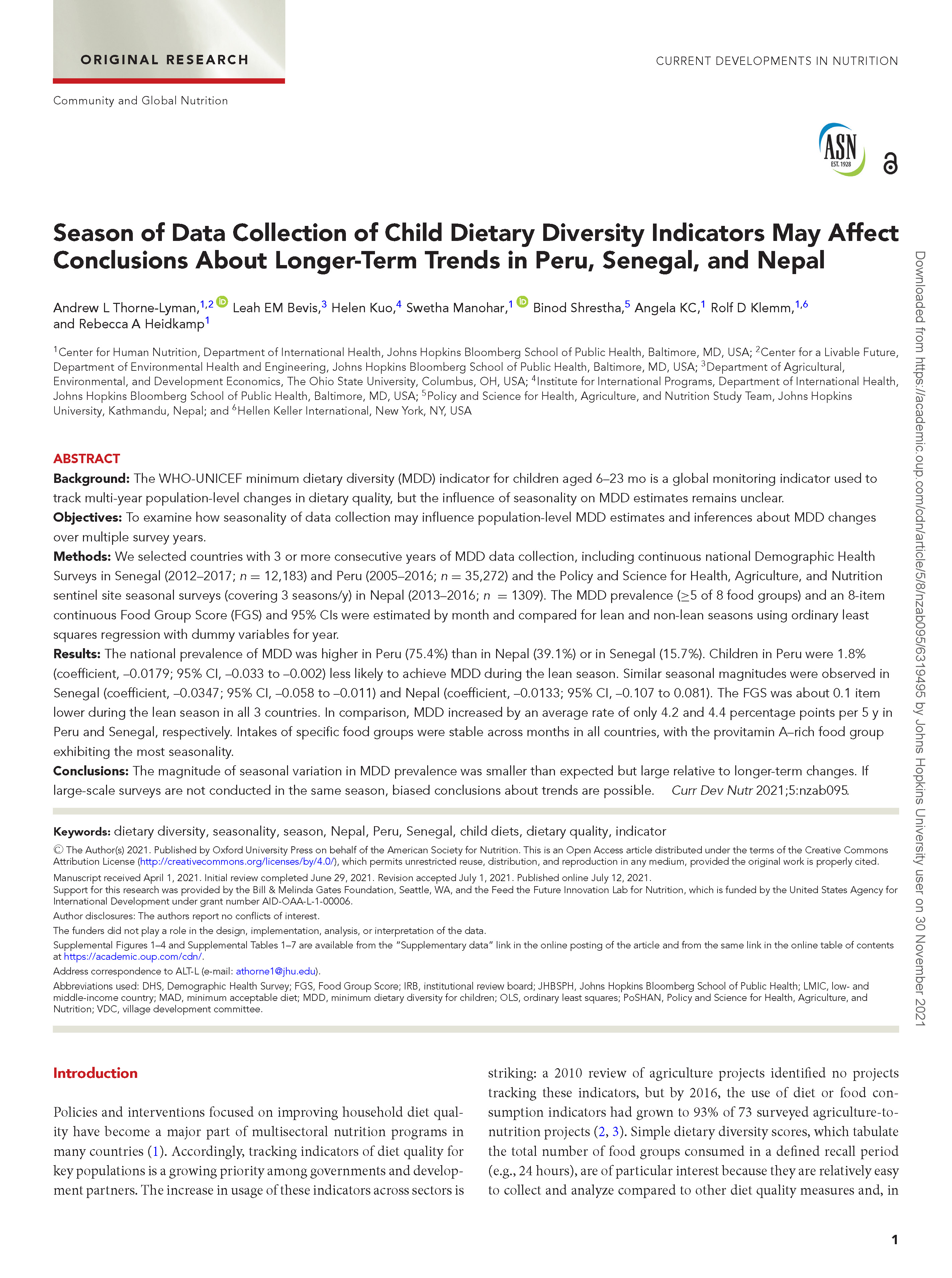Manuscript | https://pubmed.ncbi.nlm.nih.gov/34466772/
Date of Publication | July 2021
Abstract:
Background: The WHO-UNICEF minimum dietary diversity (MDD) indicator for children aged 6–23 mo is a global monitoring indicator used to track multi-year population-level changes in dietary quality, but the influence of seasonality on MDD estimates remains unclear.
Objectives: To examine how seasonality of data collection may influence population-level MDD estimates and inferences about MDD changes over multiple survey years.
Methods: We selected countries with 3 or more consecutive years of MDD data collection, including continuous national Demographic Health Surveys in Senegal (2012–2017; n = 12,183) and Peru (2005–2016; n = 35,272) and the Policy and Science for Health, Agriculture, and Nutrition sentinel site seasonal surveys (covering 3 seasons/y) in Nepal (2013–2016; n = 1309). The MDD prevalence (≥5 of 8 food groups) and an 8-item continuous Food Group Score (FGS) and 95% CIs were estimated by month and compared for lean and non-lean seasons using ordinary least squares regression with dummy variables for year.
Results: The national prevalence of MDD was higher in Peru (75.4%) than in Nepal (39.1%) or in Senegal (15.7%). Children in Peru were 1.8% (coefficient, –0.0179; 95% CI, –0.033 to –0.002) less likely to achieve MDD during the lean season. Similar seasonal magnitudes were observed in Senegal (coefficient, –0.0347; 95% CI, –0.058 to –0.011) and Nepal (coefficient, –0.0133; 95% CI, –0.107 to 0.081). The FGS was about 0.1 item lower during the lean season in all 3 countries. In comparison, MDD increased by an average rate of only 4.2 and 4.4 percentage points per 5 y in Peru and Senegal, respectively. Intakes of specific food groups were stable across months in all countries, with the provitamin A–rich food group exhibiting the most seasonality.
Conclusions: The magnitude of seasonal variation in MDD prevalence was smaller than expected but large relative to longer-term changes. If large-scale surveys are not conducted in the same season, biased conclusions about trends are possible
Suggested Citation:
Thorne-Lyman AT, Bevis LEM, Kuo H, Manohar S, Shrestha B, KC A, Klemm RD, Heidkamp RA. Season of Data Collection of Child Dietary Diversity Indicators May Affect Conclusions About Longer-Term Trends in Peru, Senegal, and Nepal. CDN. 2021; 5(8):nzab095.

